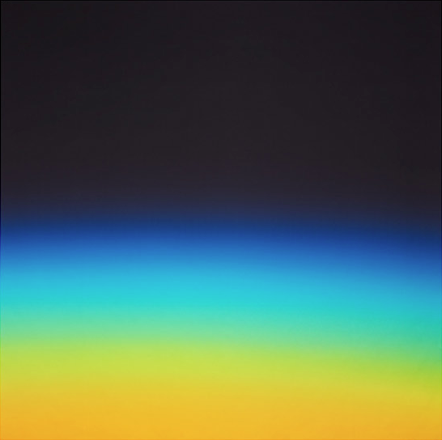Hiroshi Sugimoto's series 'Polarized Color' is based on the idea that light is not a series of separate wavelength which divide cleanly between colours, but a spectrum with the infinite capacity to blend between different shades. He was inspired by criticism of Sir Isaac Newton's scientific approach to the spectrum of light, particularly by poet Johann Wolfgang von Goethe who said "[colours] had effects upon the human psyche that would not submit to mechanistic quantification."
Sugimoto created the pictures by using expired polaroids to photograph different frequencies of light shone through a prism. In his own words:
"I decided to use virtually obsolete Polaroid film to photograph the spans
between colours.Sunlight travels through black empty space, strikes and suffers my prism, and refracts into an infinite continuum of colour. In order to view each hue more clearly, I devised a mirror with a special micro-adjusting tilting mechanism.Projecting the coloured beam from a prism onto my mirror, I reflected it into a dim observation chambre where I reduced it to Polaroid colours. Of course, I could further split those prismatic colours by adjusting the angle of thatlong tall mirror so as to reflect only the hue I want. I could split red into an infinity of reds. Especially when juxtaposed against the dark, each red appears wondrous unto itself. Moreover, colours change constantly. As thesun climbs on its arc, the colours from the prism vary moment by moment. It only takes a few minutes for red to goorange then yellow. Cranking the worm gear by hand to adjust the mirror angle to compensate for the rising sun, I managed to keep the colour band within my field of vision."















No comments:
Post a Comment